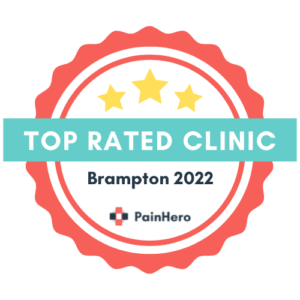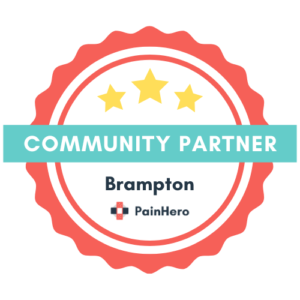Best Physiotherapy Treatment After a Stroke At Home
A stroke is both mentally and physically exhausting. As per the World Health Organization (WHO), 15 million individuals worldwide suffer from stroke each year. Five million of them pass away, and many of the surviving have lasting disabilities.
Those who survive strokes may experience behavioral abnormalities or loss of cognitive and motor capabilities. This is due to the fact that strokes harm the parts of the brain responsible for certain processes, either permanently or temporarily.
However, there is a way to overcome the negative impacts of stroke that is undergoing physiotherapy. It is one of the most effective ways to aid recovery and that too with the comfort of your own home. Additionally, it allows for a personalized approach, suiting the unique needs of each individual.
With in-home physio for stroke rehab services from a Brampton Physiotherapist, one can vastly improve recovery outcomes. In this blog, we'll explore key physiotherapy exercises that can be done at home. These exercises are designed to help rebuild strength, coordination, and confidence in a familiar and comfortable setting.
Benefits of Home-Based Physio for Stroke Rehab
Exploring the significant benefits of physiotherapy exercises at home for stroke recovery reveals a host of positive physical and mental outcomes. These exercises are not just about regaining physical abilities but also about enhancing overall well-being. Here’s how they help:
Physical Benefits:
- Accelerates overall recovery from a stroke.
- Helps in regaining lost strength.
- Increases endurance levels.
- Leads to faster walking speeds.
- Improves balance, reducing the risk of falls.
- Enhances the capability to perform everyday activities.
- Helps in preventing future strokes.
Mental Benefits:
- Alleviates symptoms of depression and uplifts mood.
- Contributes to brain health.
- Provides relief from stress.
- Boosts self-worth and independence, which might be affected post-stroke.
- Offers a sense of purpose and a target for rehabilitation efforts.
Engaging in physiotherapy exercises at home post-stroke offers a comprehensive approach to recovery. It addresses both the physical and mental aspects of rehabilitation.
Significant Post-Stroke Physiotherapy Treatment
1. Gait Training
Walking again is a fundamental goal of in-home physiotherapy (PT) after a stroke. Here's how it works:
- Your physiotherapist (PT) helps improve your walking and moving around at home.
- They pick the right tool for you. This could be a walker, quad cane, Canadian crutches, or a regular cane.
- They also make sure this tool fits you right.
Next, They will make you do special walking exercises. This includes:
- High steps.
- Sideways steps.
- Backward steps.
- Exercises for leg coordination.
Stair climbing is another important part of gait training. Your PT teaches you how to do this safely. If one leg is weaker:
- Use your strong leg to go up the stairs.
- Use your weak leg first to come down.
- Always remember to "ascend with the fine leg and descend with the weak leg."
This training helps you move better at home after your stroke.
2. Movement Training
Movement or Transfer training helps you move from one place to another. physio for stroke rehab After a stroke, this can be tough because of muscle issues or coordination problems. Your home physio therapist will help improve this skill. Here's what you'll work on:
- Moving from sitting to standing and back.
- Going from a chair to a bed, and vice versa.
- Shifting from one chair to another.
Sometimes, you might need a slide board for help. This tool makes moving between surfaces easier. Your PT will bring one for you to practice with at home. If it functions properly, they can assist you in obtaining one for daily usage.
3. Bed Mobility Training
After a stroke, moving in bed can be hard. To assist you at home, your physiotherapist (PT) can do the following:
They'll work with you on different ways to move in bed. These include:
- Rolling over.
- Scooting.
- Sitting up.
Additionally, they will also make you do exercises to get better at these movements. For example:
- Bridges and straight leg raises can make your hips stronger.
- Exercises for your arms and shoulders help you move more easily in bed.
This training is all about improving how you move while in bed.
4. Physical Exercises
Exercise is a key part of home PT after a stroke. It helps with motion, strength, coordination, and balance. Your PT will do exercises with you and give you some to do by yourself. Here are common ones:
- Straight Leg Raises: These make your hips stronger. Lie on your back and lift one leg about 12 inches. Hold, then lower. Do this 10 times.
- Bridges: Good for hip strength and moving in bed. Lay on your back and bend your knees. Lift your bottom about 6 inches, then lower. Do this 10 times.
- Supine Toe Taps: Bend your knees while lying on your back. Lift one leg and tap your toe on the bed. Do this 10 times for each leg.
- Ankle Pumps: Important for blood flow. Pump your ankles up and down 15 times. It would be preferable to perform this exercise while sitting or lying down.
- Seated Leg Extensions: Sit and straighten one leg. Do 10 to 15 times for each leg.
- Seated Marching: Sit and march in place. Do 10 to 15 marches for each leg.
- Standing Balance Exercises: Hold onto something stable and lift one leg for 10 seconds. Then the other leg. Do it under PT's watch.
- Upper Extremity Range of Motion: Improve arm mobility. Lie and bring clasped hands overhead. Do 10 to 15 times.
- Weight-Bearing Lean: Good for arm strength. Stand and lean on a counter, then switch arms. It can also be done sitting on a bed.
These exercises will help you get stronger and more mobile after a stroke.
5. Coordination Training
After a stroke, your PT will help you get better at coordination. Here's how they do it:
- In your home rehab sessions, they'll focus on improving how you move your body.
- They'll guide you through slow movements. These include targeted steps and reaches.
- Some movements are passive. Your PT moves your body for you.
- Other movements are active. You use your muscles to move in coordinated ways to improve your functional mobility.
All this helps you move better in day-to-day life.
Conclusion
Recovering from a stroke is a process that demands patience and consistent effort. Engaging in physiotherapy at home for stroke rehab can be highly beneficial. It provides individualized treatment in a homey environment.
Whether you're working with a Physiotherapy Centre Mississauga or on your own, these exercises are designed to target key areas affected by a stroke.
Remember, each stroke survivor’s journey is unique. Hence, these exercises should be tailored to individual capabilities and recovery goals. For that, you need to take guidance from a reputable physiotherapy clinic like Revitalize.
To schedule an appointment for physio at home for stroke rehab, please call us at 905-452-0222. Apart from that, you can also email us at revitalizephysio@gmail.com.




